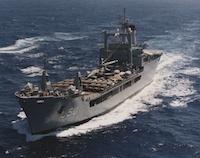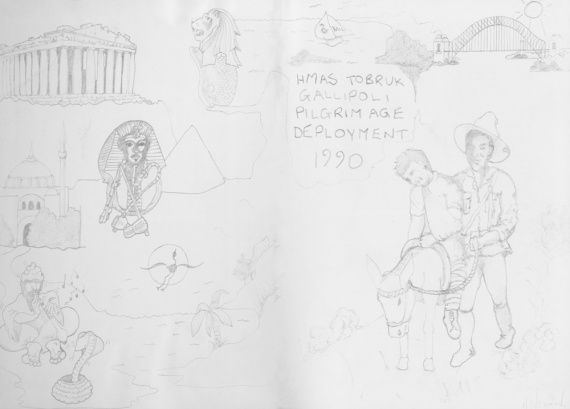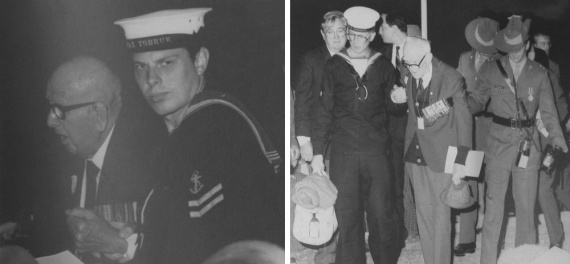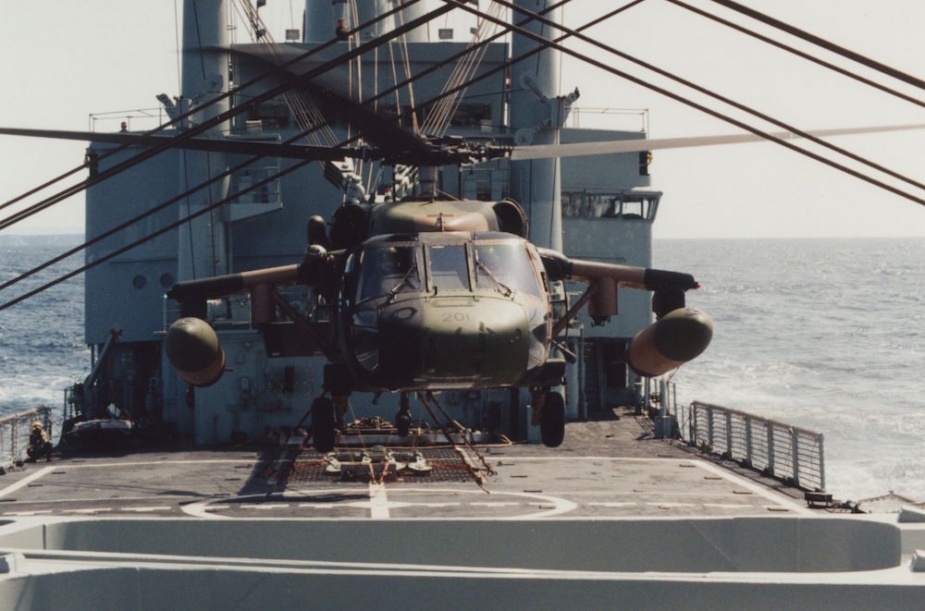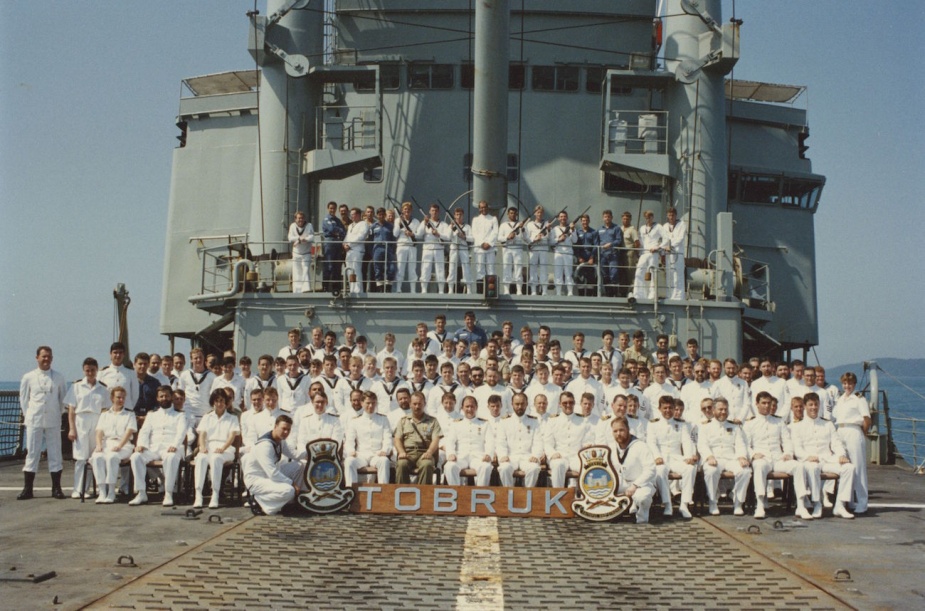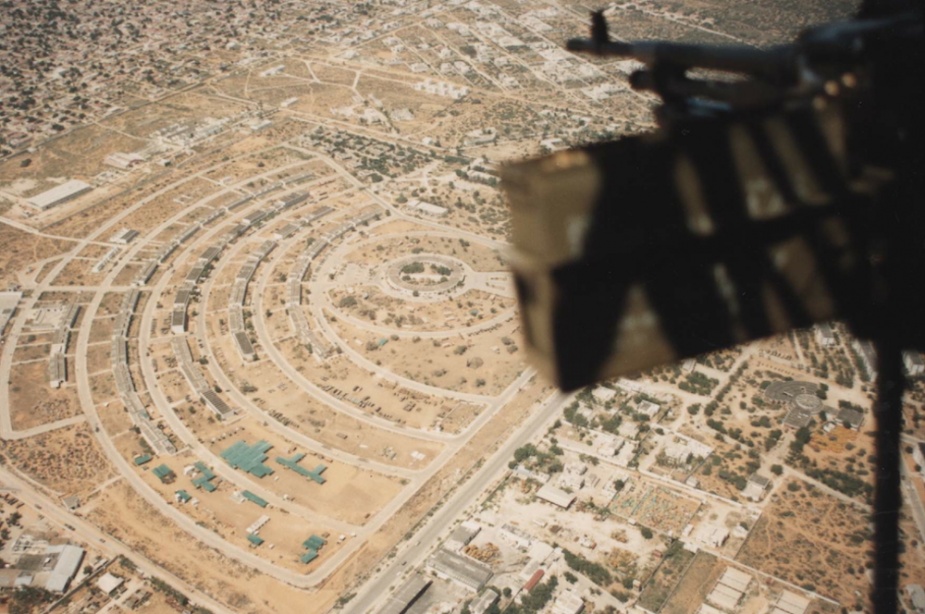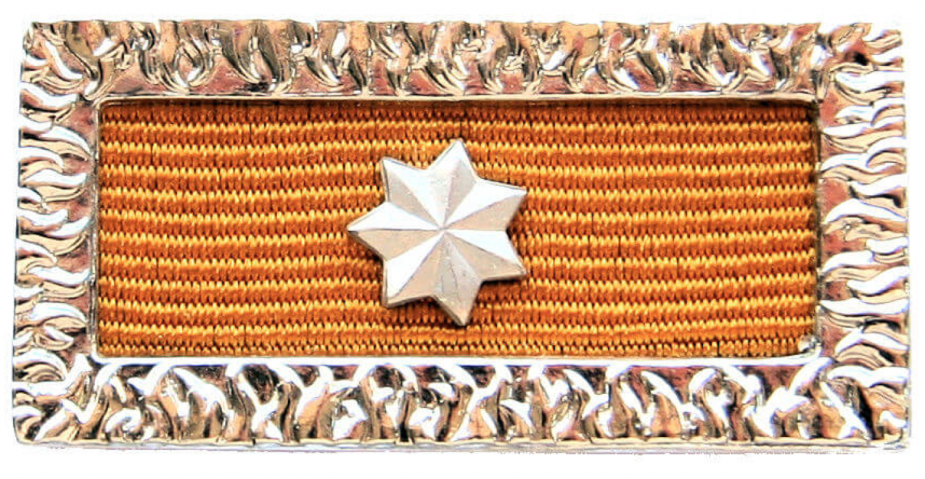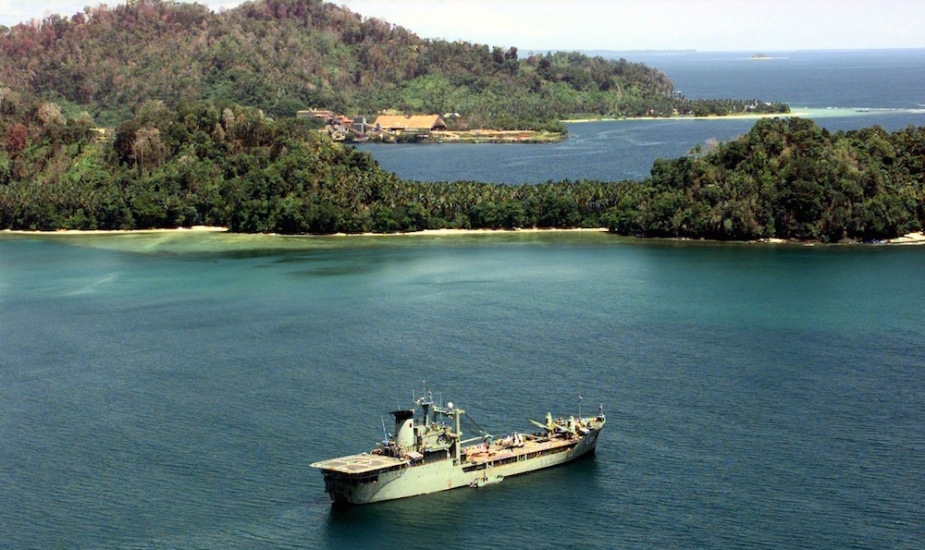HMAS Tobruk (II) - Part 2
| Class |
Modified Sir Bedivere Class |
|---|---|
| Type | |
| Pennant |
L50 |
| Motto |
Faithful and Strong |
| Builder |
Carrington Slipways Pty Ltd |
| Laid Down |
7 February 1979 |
| Launched |
1 March 1980 |
| Launched by |
Lady Anna Cowen |
| Commissioned |
23 April 1981 |
| Decommissioned |
31 July 2015 |
| Dimensions & Displacement | |
| Displacement | 5800 ton |
| Length | 127 metres |
| Beam | 18 metres |
| Performance | |
| Speed | 17 knots |
| Complement | |
| Crew | 150 |
| Embarked Forces | 520 |
| Propulsion | |
| Machinery | 2 x 54 ton, 4800 bhp Mirrlees-Blackstone KDMR8 diesel engines |
| Armament | |
| Guns |
|
| Helicopters | In support of Amphibious Operations (ranging from the Squirrel AS350-B to Chinook CH47) |
| Awards | |
| Inherited Battle Honours | |
| Battle Honours | |
| Resources | |

1990
The start of the new decade provided a precursor for what much of the 1990s would hold in store for Tobruk. On 25 January 1990 she was ordered to proceed from Sydney to Townsville and prepare to deploy to Bougainville Island under the auspices of Operation DEFERENCE, the Australian Defence Force's contingency plan to evacuate Australian nationals from Bougainville as the result of civil unrest. She arrived in Townsville on 30 January, however, as tensions temporarily eased in Bougainville, all naval units assigned to DEFERENCE were released from the operation the following day.
Tobruk departed Sydney again on 5 March, in company with HMAS Sydney (IV), in support of Operation VISITATION, the historic pilgrimage to Gallipoli to commemorate the 75th Anniversary of the Anzac landing on 25 April 1915.
The two ships arrived in Alexandria, via Fremantle and Port Victoria in the Seychelles, on 12 April having passed through the Suez Canal the previous day. Tobruk entered the Dardanelles on 18 April and visited Canakkale and Istanbul, before proceeding to Anzac Cove early on 25 April for Anzac Day commemorations.
She departed Anzac Cove early the next morning and visited Canakkale, Istanbul and Athens before passing through the Suez Canal once again on 8 May. She was forced to make detour to Yanbu 'Al Bahir, Saudi Arabia, on 10 May to land an ill sailor, and again to Djibouti when a second sailor fell ill, but on this occasion he was diagnosed with a viral infection and treatment ashore was not required. Tobruk recommenced passage back to Australia and arrived home in Sydney, via Karachi, Penang, Singapore and Darwin, on 4 July.
Tobruk departed Sydney for her second overseas deployment of the year on 15 October, this time bound for South East Asia. She visited Ujung Pandang, Indonesia, before continuing on to Bangkok, Thailand, where a detachment of 30 volunteers from the ship's company conducted maintenance work on the Hellfire Pass, one of the most notorious sections of the infamous World War II Burma-Thailand Railway. She went on to visit Singapore, Lumut, Phuket, Manila, Hong Kong where she spent Christmas and New Year, Jakarta, and returned to Sydney, via Albany, on 25 January 1991. Upon her return, she began a major refit at the Forgacs dockyard in Newcastle.
1991
As Tobruk neared the end of her refit, the ship's company exercised their right the Freedom of Entry to the City of Lake Macquarie on 10 August and two days later departed Newcastle to commence sea trials before proceeding with shakedown and workup programmes. She recommenced a routine program of exercises, training and maintenance in September.
She completed S70-A-9 Blackhawk first-of-class flight trials and participated in her first major exercise of the 1990s, Exercise WET WALLABY, in October 1991. Exercises she participated in during the course of the decade included CORAL DAWN in 1991; KANGAROO, TASMAN LINK and SWIFT EAGLE in 1992; RHINO CHARGE, TERMITE TRIUMPH and MOROTAI SERPENT in 1993; INITIAL LANDING, NIGHT CROCODILE, TASMAN LINK and SWIFT EAGLE in 1994; INITIAL LANDING, TASMAN LINK and KANGAROO in 1995; INITIAL LANDING, THUNDER BAY, BLACK CARILLON and SWIFT EAGLE in 1996; TANDEM THRUST and RHINO CHARGE in 1997; INITIAL LANDING and NORTHERN ENCOUNTER in 1998; and INITIAL LANDING and PROUD ANCHOR in 1999. She was also a regular participant in Fleet Concentration Periods and squadron exercises throughout the 1990s.

